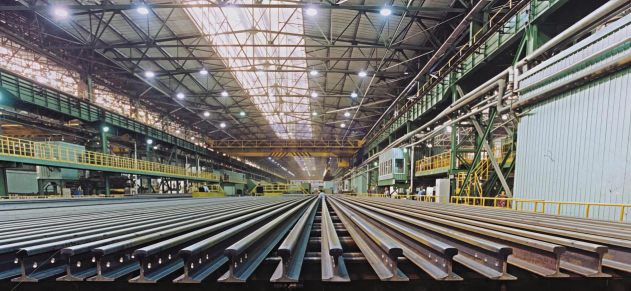Steel Encyclopedia - Fundamentals of Rail Steel: Modern Steel Rail Production Process

Date: 2025/6/3

Category: Metallurgical encyclopedia terms

Views: 100
To meet the development requirements of railway high-speed modernization, the comprehensive performance standards for steel rails have become increasingly stringent, driving continuous advancements in steel rail production processes. Currently, there are two primary production modes: the long-process route using molten iron as raw material and the short-process route utilizing scrap steel.
1.Long-Process Route
This method begins with iron ore to produce sintered and pelletized feedstocks. The materials are then smelted in a blast furnace to generate molten iron, which undergoes pretreatment (dephosphorization, desulfurization, and desiliconization) before being transferred to a top-bottom combined blowing converter for refining. Subsequent ladle refining and vacuum degassing processes ensure precise control of composition, harmful gases, and inclusions. The molten steel is continuously cast into billets of specified dimensions. These billets are reheated to rolling temperatures in a walking beam furnace, shaped into blooms via a breakdown mill, and further rolled into final rail profiles using universal roughing and finishing mills. Post-rolling steps include online marking, head cropping, pre-bending on cooling beds, and cooling below 60°C. The cooled rails undergo straightening via horizontal/vertical roller systems before non-destructive testing. Qualified rails proceed to end processes such as end milling, drilling, manual inspection, and stacking.
2.Short-Process Route
This approach employs scrap steel as raw material. After initial melting in an electric arc furnace (EAF), the steel undergoes secondary refining in an LF ladle refining furnace and degassing in VD/RH vacuum degassing units. It is then continuously cast into required billet dimensions. Subsequent rolling, precision finishing, and inspection processes mirror those of the long-process route.
3.Core Principles
Both processes share critical quality-enhancing steps — refining, degassing, continuous casting, and universal mill rolling — reflecting the "three essential precision principles" of rail production: precision refining, precision rolling, and precision finishing. These methodologies ensure steel rails with accurate cross-sectional dimensions and superior internal quality.








